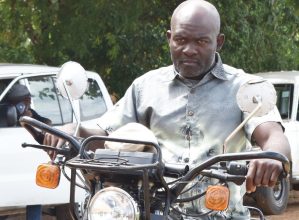Social protection taking poverty on
Even with billions invested in eradicating rural poverty, there will always be thousands going hungry-thousands more, still in poverty. For such people, EPHRAIM NYONDO writes, social protection becomes critical in their welfare.
Emily Makono says she is tired of being poor. But why, after 51 years of independence, is she still poor? Napoleon Bonaparte-yes, that late 19th century French war hero-could, somehow, explain Makono’s situation. Napoleon saw poverty as a product of geography.
Geography, he wrote, is destiny. What he meant was where you live defines the kind of social services you get and the opportunities your exploit.
Makono lives in Degadega Village, an impoverished remote area in Traditional Authority (T/A) Degadega, located far from Phalombe boma.

The road to Degadega is narrow, potholed and dusty during the dry season. Locals say it is impassable during the rainy season because it gets muddy and slippery as the potholes turn into pools.
Farming is the major source of income here.
“My children walk five kilometres to get to their primary school,” she says, adding: “the nearest health centre takes me five hours on foot and two hours on a bicycle.”
With Degadega and Makono in mind, it is difficult to disagree with Napoleon’s take on geography and poverty.
However, agreeing with Napoleon has a tragedy of humans resigning to their fate.
In fact, it is akin to believing that there is no hope for those staying in rural areas. To develop, one would then be compelled to conclude, you need to migrate to an urban area.
To avoid the tragedy of resigning to the fate of geography, governments, pushed by global goals of reducing poverty, have, over the years, been brainstorming on how best they would reach out to rural dwellers such as Makono.
The understanding is that beyond the free primary education and health care, most people in rural areas continue to live in poverty because they lack access to economic opportunities to feed and support themselves.
This is why, over the years, governments, non-governmental organisations (NGOs) and development partners have been championing social protection in reaching to the poorest of the poor.
Food and Agriculture Organisation (FAO) defines social protection as a blend of policies, programmes and interventions that aim at protecting poor and food-insecure people and to lift them out of poverty and hunger.
Through a variety of programmes that provide financial or in-kind support to poor and vulnerable people, according to FAO, social protection enhances their income, capacities and rights.
Social protection, however, is not new in Malawi. For years, Malawi, together with development partners, has been implementing various social protection programmes.
Among others, the programmes include: Social Cash Transfer Programme targeting ultra poor and labour constrained households; food or cash for public work programme targeting most vulnerable households with access to labour; households and groups supported and trained in village savings and loans schemes (VSLs) as a means to facilitate access to improved inputs over the years; and, lastly, the school feeding programme.
Early last year, Makono—through Community Savings and Investment Promotion (Comsip)—was put on the social cash transfer programme together with hundreds other beneficiaries.
“My husband died five years ago and left me with eight children. Life was hell for me until I joined Comsip last year. I receive K10 000 a month and the money had done magic for me. Over the years, it has helped me send my two girls to secondary school, feed and clothe my other children,” she says.
She adds that, through participating in the VSLs, she managed to buy two goats last year.
“A goat is something I could only imagine in my dream. But now I have my own. It is unbelievable,” says Makono.
Although Makono’s poverty could hardly be described as over, it is without question that she is no longer as desperately poor as she used to be.
In fact, at Nkhulambe Primary School where Makono’s three children learn, the deputy head teacher Justin Namakhuwa says through the School Feeding Programme, the learning process and enrolment has greatly improved.
“Retention rate is now high. There is concentration and full participation in class. And absenteeism has been reduced,” he says.
He adds that even communities are benefiting from the feeding programme. Farmers, he explains, have now found a steady market of their produce-something which has spurred agriculture activities among communities around the school.
It is this connection between social protection and agriculture that forced the UN to theme this year’s World Food Day commemoration as ‘Social Protection and Agriculture: Breaking the Cycle of Rural Poverty’.
In his 2015 letter to Malawi, FAO director general Graziano Da Silva says the theme was chosen to draw global attention to the role social protection plays in eradicating hunger and poverty when it is prioritised in development agendas.
“Credited with the achievement of crucial results in the fight against poverty and hunger worldwide, social protection has been integrated as a strategic target in a number of the Sustainable Development Goals [SDG], including SDG number 1: “End poverty in all its forms everywhere”.
“This is a strong signal of the fundamental role that the international community and the UN are ascribing to social protection in the fight against poverty and hunger,” reads the letter.
National coordinator for Civil Society Agriculture Network (CisaNet), Tamani Nkhono-Mvula, agrees with Da Silva.
“The understanding is that poor people need some support to be able to produce and live a sustainable livelihood. Social protection provides that support,” he says.
However, he advises that “social protection initiatives have to be transformative in nature so that people are not dependent on them forever”.
In fact, that is what Makono wants-to be independent and prove Napoleon wrong. n





